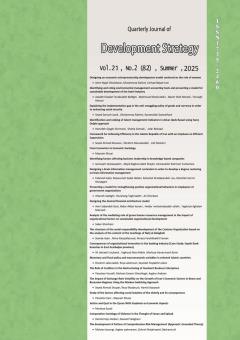The Impact of Exchange Rate Volatility on the Growth of Iran's Economic Sectors in Boom and Recession Regimes Using the Markov-Switching Approach
Subject Areas : اقتصادی
Syed Ahmad shojaee
1
,
Reza Maaboudi
2
*
![]() ,
hamid asayesh
3
,
hamid asayesh
3
![]()
1 - PhD student in economics, Islamic Azad University, Aliguderz branch, Aliguderz, Iran
2 - Faculty Member of the Department of Economics, Faculty of Humanities, Ayatollah Ozma Boroujerdi University, Boroujerd, Iran.
3 - Associate Professor, Department of Economics, Faculty of Humanities, Ayatollah Boroujerdi University.
Keywords: Exchange Rate Volatility, Economic Growth, Boom and Recession Regime, Markov-Switching Approach.,
Abstract :
Over the past two decades, the Iranian economy has experienced a high degree of volatility and instability in financial and foreign exchange markets due to various reasons, such as widespread sanctions and inflation, which have resulted in significant fluctuations in macroeconomic variables and created an atmosphere of uncertainty for investors and economic agents. Considering the importance of the subject, the present study, using the Markov-Switching approach, has examined the impact of exchange rate volatility on the growth of value added in the agricultural, industrial& mining, and service sectors of Iran during the period 1991-2022. The findings indicate that exchange rate volatility in both boom and bust regimes has a negative and significant impact on the growth of value added in the agriculture, industry & mining, and service sectors. In a way, with increasing exchange rate fluctuations, the industry & mining, services, and agriculture sectors experience the greatest decrease in value added, respectively. Also, the intensity of the impact of exchange rate fluctuations on the growth of value added in the sectors is greater during recession than during boom. Other findings also show that capital stock and trade openness have a positive and significant effect on the growth of value added in industry & mining, agriculture, and services in both boom and bust periods, and this effect is greater in boom periods than in recession periods. Effects of inflation rate fluctuations, oil price fluctuations, economic policy uncertainty, and depreciation of the national currency also have a negative effect on the growth value of sectors in both boom and bust periods, so that the intensity of the impacts is greater in the bust regime than in the boom regime. To reduce exchange rate volatility and fluctuations in Iran, it is recommended to implement policies such as reducing central bank interventions in the foreign exchange market, maintaining fiscal discipline and lowering public debt, enhancing the attractiveness of financial markets to absorb idle capital, and unifying the exchange rate. Implementing these policies can, in addition to decreasing currency instability, increase investor confidence and improve the growth of value added across various sectors of the economy.

